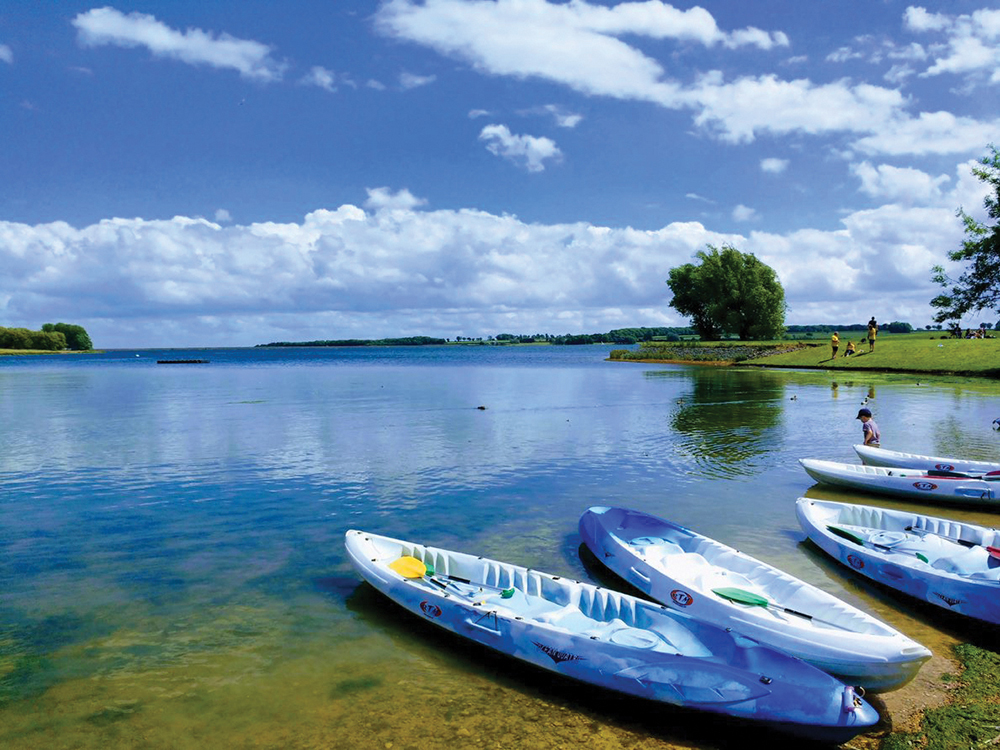In this issue, we speak to Mott MacDonald’s Water Resources team, who work across the water sector in the UK and internationally, taking a holistic and collaborative approach to water quantity and quality challenges.
Traditionally these challenges were met through hard engineering solutions, such as end-of-pipe treatment, concrete flood defences or new sources of water. The industry-wide and regulatory drive for innovation and collaboration provides opportunities for sustainable, catchment-focused solutions, addressing some of the most pressing concerns facing the industry – protecting the environment and ensuring resilient water supplies for the future
What catchment management approaches have you been using to improve water quality?
Mott MacDonald is at the forefront of delivering catchment management appraisals and modelling investigations, addressing high levels of pesticides, nutrients, bacteria and plastics in surface, ground and coastal waters. Whilst such pollutant-specific approaches are important in meeting regulatory drivers, we also promote a more holistic view, incorporating wider benefits such as provision for ecosystem services.
Can this holistic approach be used to address water quantity concerns?
Absolutely; a recent successful example of an integrated approach to address water quantity challenges comes from the Water Resources East (WRE) project. Mott MacDonald works collaboratively with partners and Anglian Water on this project, bringing together stakeholders from a range of sectors, regulators and NGOs. WRE is creating a long-term multi-sector water resources strategy for the East of England to provide a sustainable supply for the next 100 years, resilient to the effects of climate change, population growth and drought.
What are the challenges facing the adoption of truly integrated catchment management in the water industry?
Solutions often depend on different elements of water company operations, managed by different teams across the business, which presents a challenge. By collaborating across teams and with industry partners, water companies can optimise their expertise and expenditure, ensuring a robust outcome for themselves, wider society and the environment.
The asset management and environmental planning timescales water companies work to are frequently too short to prove compliance and wider benefits of catchment-based solutions. Due to the time taken for water to travel from a field to an aquifer, it can be over 50 years for catchment management interventions at the land surface to be realised at a groundwater well. When working to a 25-year planning horizon, justifying investments for programmes with such long payback can be difficult. It is critical to engage with regulators to ensure understanding of this and influence decision-making.
One of the greatest challenges is recognition and acceptance of the uncertainty inherent in catchment management. End-of-pipe solutions typically guarantee a pollutant reduction to within a specified limit, but often at high totex and carbon cost. Alternative catchment solutions can also boost ecosystem services and natural capital, with positive impacts on human health and well-being, however, there is a risk that outcomes for a target quality metric are less certain or controllable. The multiple benefits gained by in-catchment solutions may outweigh the cost of rare target breaches, but for such an approach to be tolerable to water companies, regulators need to accept uncertainty and recognise it within consents.
How can the risks you describe be mitigated?
Good data is key to understanding a problem, to robustly assess the costs and benefits of potential solutions, and work with uncertainties. With more information available than ever before, data analytics can provide outcomes based on robust up-to-date evidence. Mott MacDonald’s award-winning ‘Safeswim’ water quality initiative, commissioned by Auckland Council, New Zealand, uses real-time rainfall data to predict water quality at Auckland beaches. The results are online, so the public can make informed decisions about which beach to visit.
A comprehensive understanding of the industry and regulatory environment is essential. We work with water companies and regulators, and understand all aspects of the water industry; from how water companies operate, to the factors that impact upon their business, and the cycles within which they plan investment. An extensive knowledge of the regulatory environment in which the industry operates underpins our work, and we understand available funding sources and the necessity of building a strong business case to illustrate the benefits of every cost.
What does the future hold for catchment management?
Emerging policies, in the light of Brexit, abstraction reform, Defra’s Health and Harmony paper and their 25 Year Environment Plan provide opportunities to change how we address industry-wide challenges. We are already exploring multi-sector water management options with Anglian Water in one of the Environment Agency’s Initial Priority Catchments, supporting clients with natural capital approaches to investments, pioneering nature-based solutions and providing thought leadership for emerging concerns such as plastics.
Embracing new technologies also presents opportunities. Cloud computing can be used to simulate multiple model runs in a shorter time, quickly expanding the evidence base from which options can be developed and decisions made. In a coastal modelling project for Dwr Cymru Welsh Water we used more than 120 virtual computers to reduce model run-time from 6 months to 6 weeks.
By collaborating to connect people, data and resources, we can open opportunities to achieve more cost-effective solutions with greater benefits to the water industry, the environment and society.
For more information on Mott MacDonald’s approaches to catchment management, please contact: water.resources@mottmac.com




